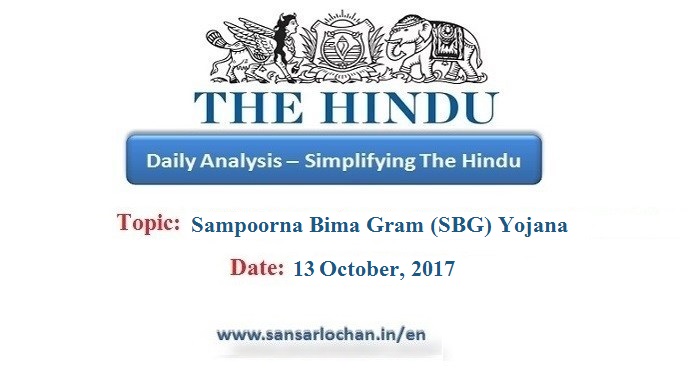Postal Life Insurance (PLI) is arguably the oldest life insurance scheme of India. It was introduced in 1884. The beneficiaries of this scheme were Government and Semi-Government employees. In 1995, that is nearly a century after its launching, a new insurance scheme was introduced for covering the people living in rural areas, especially weaker sections and women. This scheme was named Rural Postal Life Insurance (RPLI) Scheme. Like the PLI, RPLI was known for low premium and high bonus. As on March 31, 2017, the number of people covered under the above the two schemes was 46.8 lakh and 146.8 lakh respectively. Now the Ministry of Communication, Govt. of India has launched on October 13, 2017 yet another insurance scheme. This is to be called Sampoorna Bima Gram (SBG) Yojana.
Purpose of Sampoorna Bima Gram (SBG) Yojana
The purpose of Sampoorna Bima Gram (SBG) Scheme is to expand the clientele base of Postal Life Insurance (PLI) by providing affordable life insurance services to the rural people. This scheme will bring all villages under the Saansad Aadarsh Gram Yojana within its ambit. At least one village that has minimum 100 households will be identified in each of the districts of the country and effort will be made to cover all households of such identified village with a minimum of one RPLI (Rural Postal Life Insurance) policy each.
The clientele base of PLI has also been dicided to expand by opening its doors to professionals such as Doctors, Engineers, Management Consultants, Chartered Accountants, Architects, Lawyers, Bankers and others, and also to the employees to listed companies of NSE (National Stock Exchange) and Bombay Stock Exchange (BSE).
The Govt. believes that the proposed expansion of clientele in respect of PLI and covering under RPLI in insurance all the households of Sampoorna Bima Gram Yojana in each district of the country would go a long way to serve as an instrument of insuring rural people’s lives as well as enhancing financial inclusion.
Read all DAILY HINDU NEWS in Simple English Here>> Simplifying The HINDU
